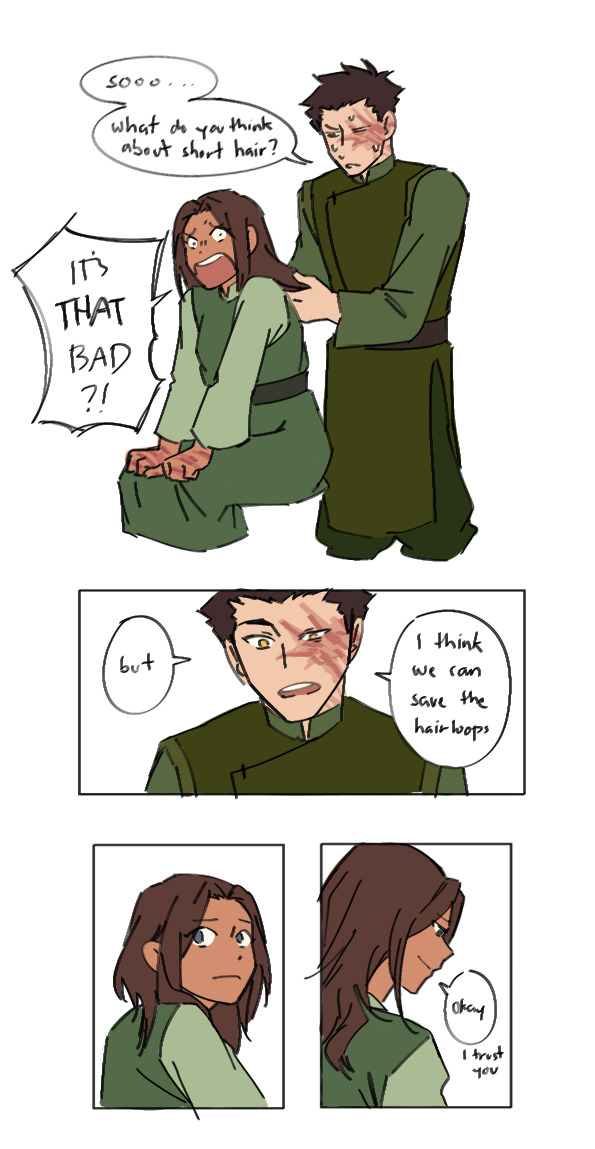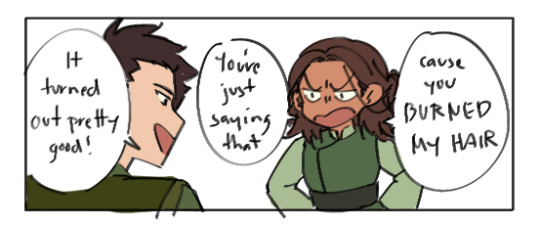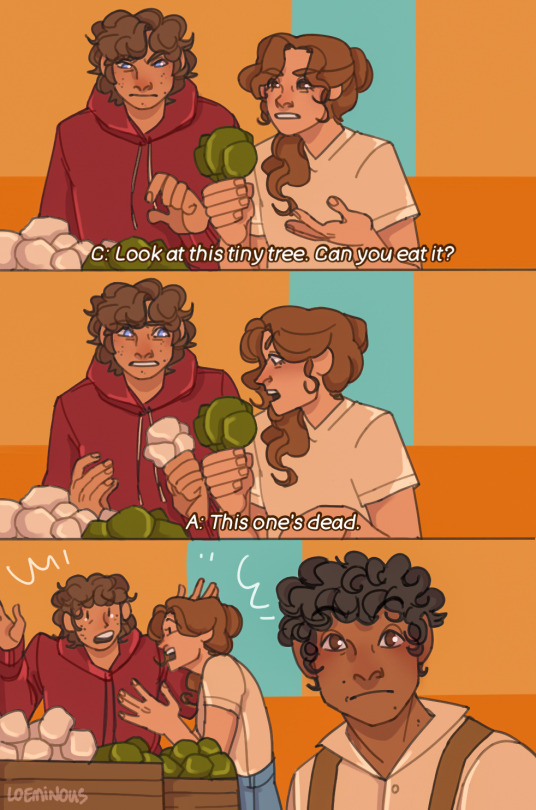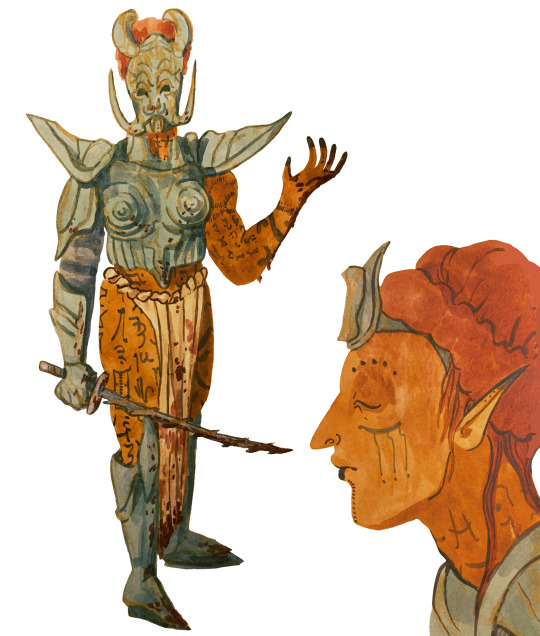#my thoughts about books
Text
So there’s a trend that I absolutely hate in online discussions of (non-satirical) genre, particularly genre that’s influenced by the gothic. This trend makes my eyes roll back in my head until I can see through my own skull. It makes me want to bite a car in half. It makes me want to step into the jellyfish tank at the New York Aquarium and beg for the sweet sweet annihilation of a thousand stings.
I call this trend: Oh Just Be Sensible, and it goes like this:
“Why do vampires always end up covered in blood when they feed, I don’t spill soup all down the front of my shirt when I eat dinner. Real toddler energy.”
“Why do people always cut their hands to swear oaths, everyone knows it would hurt way less on the [insert body part with fewer nerve endings]”
“Vampires shouldn’t be feeding from people’s wrists, it damages the tendons, if doctors don’t take your blood from your wrist, vampires shouldn’t either! No one will be able to flex their fingers the next day.”
(This comes up a lot with vampires, I mention, as I stride purposefully into the glistening mass of jellyfish.)
There are direct answers for some of these when it comes to the practical visual language of a particular medium (for example, you cut your hand on stage / on set because you can hold a blood pack in there, and even if you don’t have an effect, the gesture and its purpose can be discerned from the nosebleeds) but what really gets me is how thematically boneheaded this sort of observation is.
Like, let’s go down the list here.
Why do vampires end up covered in their victims’ blood? Well Scoob, do you think it could maybe have something to do with their bestial, inhuman nature? Or with the erotic and sensual abandon with which they can approach violence, now that they’re untethered from human morals?
Why do people cut their hands to swear oaths? Aside from what I mentioned above, do you think maybe it’s because it adds a layer of gravity to see two people swearing an oath to one another with blood dripping from their clasped hands? Do you think it’s maybe to evoke a unity of body, something greater and more primal than a unity of word? Or maybe to remind us of the dire consequences of breaking a blood oath?
Why are authors having vampires feed from people’s wrists if it damages their tendons? Damn, maybe that’s because it’s where the pulse is. You know, the pulse? The heartblood, the thing that races when you’re scared or turned on or both? The thing that stutters when you’re close to death and could, should the author choose, ring in the vampire’s ears like a chime or a great pounding thunderclap. Maybe in a story about undead beings who drink blood, we can sacrifice a bit of sensible reality in order to enforce the emotion and thematic heft of a scene?
Images like these communicate what is happening between two characters, not just the events that are transpiring! No one making stories forgot to consider ~sensible~ little observations, because it would be absolutely inane to consider an observation with the creative value of a wet paper towel. This stuff is part of our visual language for a reason! Themes also need to be communicated!
God, like, okay, I’m exhausted and the aquarium staff keeps yelling at me when they find me here, but let me just wrap up by saying that relationships, character and meaning are expressed in so many ways beyond dialogue or internal monologue, and those expressions are so rarely sensible.
(Also all this shit looks cool as hell, do you really want your protagonists swearing to die for one another by dabbing their slightly bleeding elbows together, grow up.)
#me: don't make me tap the sign#sign: fun allowed#(thematic clarity and character relationships should trump sensible realism every time)#(realism is fine! but monocle popping smirky little 'hmm I think dan brown was an idiot' smugness is just....bad!)#(it's bad and it makes for bad writing!)#my thoughts about books
10K notes
·
View notes
Note
Rowling isn't denying holocaust. She just pointed out that burning of transgender health books is a lie as that form of cosmetic surgery didn't exist. But of course you knew that already, didn't you?
I was thinking I'd probably see one of you! You're wrong :) Let's review the history a bit, shall we?
In this case, what we're talking about is the Institut für Sexualwissenschaft, or in English, The Institute of Sexology. This Institute was founded and headed by a gay Jewish sexologist named Magnus Hirschfeld. It was founded in July of 1919 as the first sexology research clinic in the world, and was run as a private, non-profit clinic. Hirschfeld and the researchers who worked there would give out consultations, medical advice, and even treatments for free to their poorer clientele, as well as give thousands of lectures and build a unique library full of books on gender, sexuality, and eroticism. Of course, being a gay man, Hirschfeld focused a lot on the gay community and proving that homosexuality was natural and could not be "cured".
Hirschfeld was unique in his time because he believed that nobody's gender was either one or the other. Rather, he contended that everyone is a mixture of both male and female, with every individual having their own unique mix of traits.
This leads into the Institute's work with transgender patients. Hirschfeld was actually the one to coin the term "transsexual" in 1923, though this word didn't become popular phrasing until 30 years later when Harry Benjamin began expanding his research (I'll just be shortening it to trans for this brief overview.) For the Institute, their revolutionary work with gay men eventually began to attract other members of the LGBTA+, including of course trans people.
Contrary to what Anon says, sex reassignment surgery was first tested in 1912. It'd already being used on humans throughout Europe during the 1920's by the time a doctor at the Institute named Ludwig Levy-Lenz began performing it on patients in 1931. Hirschfeld was at first opposed, but he came around quickly because it lowered the rate of suicide among their trans patients. Not only was reassignment performed at the Institute, but both facial feminization and facial masculization surgery were also done.
The Institute employed some of these patients, gave them therapy to help with other issues, even gave some of the mentioned surgeries for free to this who could not afford it! They spoke out on their behalf to the public, even getting Berlin police to help them create "transvestite passes" to allow people to dress however they wanted without the threat of being arrested. They worked together to fight the law, including trying to strike down Paragraph 175, which made it illegal to be homosexual. The picture below is from their holiday party, Magnus Hirschfeld being the gentleman on the right with the fabulous mustache. Many of the other people in this photo are transgender.

[Image ID: A black and white photo of a group of people. Some are smiling at the camera, others have serious expressions. Either way, they all seem to be happy. On the right side, an older gentleman in glasses- Magnus Hirschfeld- is sitting. He has short hair and a bushy mustache. He is resting one hand on the shoulder of the person in front of him. His other hand is being held by a person to his left. Another person to his right is holding his shoulder.]
There was always push back against the Institute, especially from conservatives who saw all of this as a bad thing. But conservatism can't stop progress without destroying it. They weren't willing to go that far for a good while. It all ended in March of 1933, when a new Chancellor was elected. The Nazis did not like homosexuals for several reasons. Chief among them, we break the boundaries of "normal" society. Shortly after the election, on May 6th, the book burnings began. The Jewish, gay, and obviously liberal Magnus Hirschfeld and his library of boundary-breaking literature was one of the very first targets. Thankfully, Hirschfeld was spared by virtue of being in Paris at the time (he would die in 1935, before the Nazis were able to invade France). His library wasn't so lucky.
This famous picture of the book burnings was taken after the Institute of Sexology had been raided. That's their books. Literature on so much about sexuality, eroticism, and gender, yes including their new work on trans people. This is the trans community's Alexandria. We're incredibly lucky that enough of it survived for Harry Benjamin and everyone who came after him was able to build on the Institute's work.

[Image ID: A black and white photo of the May Nazi book burning of the Institute of Sexology's library. A soldier, back facing the camera, is throwing a stack of books into the fire. In the background of the right side, a crowd is watching.]
As the Holocaust went on, the homosexuals of Germany became a targeted group. This did include transgender people, no matter what you say. To deny this reality is Holocaust denial. JK Rowling and everyone else who tries to pretend like this isn't reality is participating in that evil. You're agreeing with the Nazis.
But of course, you knew that already, didn't you?
Edit: Added image IDs. I apologize to those using screen readers for forgetting them. Please reblog this version instead.
#transgender#trans history#transsexual#transphobia#Magnus Hirschfeld#holocaust#holocaust denial#book burning#j.k. rowling#jk rowling#just in case you missed what i mean by all this: go fuck yourself anon :)#trans people have always existed#and we will always exist#if you really wanna pick a fight with me over well-documented history then you better bring in some sources to back your shit#queer history#queer#lgbt+#lgbta+#lgbt#lgbt history#edit: i finally got around to those damn image IDs. i am so very sorry for totally forgetting that's my bimbo moment of the month#also real quick i thought about adding an image of the actual building but the only one i can find has a Nazi parade in front of it#it was taken the day of the book burning raid and honestly if i were to include it then i'd add it to the first few paragraphs#and i think the story's better told when you uphold the hope Magnus Hirschfeld and all the researchers he worked with had#also keeps being brought up: yes Hirschfeld was a eugenicist. it was a popular belief set that was only discredited after WW2#Hirschfeld died in 1935. he literally didn't live long enough to see science turn against those beliefs and practices#considering how he changed his mind on transitions i like to think he would've changed his mind on eugenics too if he'd lived
16K notes
·
View notes
Text
“When I first heard it, from a dog trainer who knew her behavioral science, it was a stunning moment. I remember where I was standing, what block of Brooklyn’s streets. It was like holding a piece of polished obsidian in the hand, feeling its weight and irreducibility. And its fathomless blackness. Punishment is reinforcing to the punisher. Of course. It fit the science, and it also fit the hidden memories stored in a deeply buried, rusty lockbox inside me. The people who walked down the street arbitrarily compressing their dogs’ tracheas, to which the poor beasts could only submit in uncomprehending misery; the parents who slapped their crying toddlers for the crime of being tired or hungry: These were not aberrantly malevolent villains. They were not doing what they did because they thought it was right, or even because it worked very well. They were simply caught in the same feedback loop in which all behavior is made. Their spasms of delivering small torments relieved their frustration and gave the impression of momentum toward a solution. Most potently, it immediately stopped the behavior. No matter that the effect probably won’t last: the reinforcer—the silence or the cessation of the annoyance—was exquisitely timed. Now. Boy does that feel good.”
— Melissa Holbrook Pierson, The Secret History of Kindness (2015)
#dog books#this chapter was very sad reading#when you become aware of punishment#and its use and its prevalence#it's hard not to despair#again this is why positive reinforcement feels like absolution#maybe now my eyes are open I can make up for what I did#what I did because it's what everyone does#because it's more acceptable to punish than to do anything else#I've been having so many thoughts about punishment and society and justice#this book was very validating#another great validating moment in my jumbled thoughts#was listening to the You're Wrong About episode on justice#with Amanda Knox#it helped to ease the despair a little
21K notes
·
View notes
Text






Book 2 au: sparring sessions and short hair katara
They like to have sparring sessions in order to keep their bending skills sharp. They allow themselves to go all out and not hold back at all cause they know if anyone got hurt, Katara could just heal them
But anyways, wouldn't it be kinda funny if Zuko accidentally burned Katara's hair tho? Aofkqldkkajfjd
The "I think we can save the hairloops" line is from @linnoya-writes thank you for that!! :>>
#zutara#zuko#katara#atla#book 2 au#my art#i mentioned in my last book 2 au post that i wanted to include short hair katara into it and y'all were so supportive of it!! 😭😭😭#so this is how i think it would go#it would happen as katara is trying to evade one of zuko's fire balls#she manages to avoid it but since her hair is long it still caught on fire#she'd be pissed so she water whips the hell out of zuko#and then promptly forgets about it akfhkakdkakdj#even after the sparring session she still hasn't remembered cause 'oh no zuko's in pain i have to help him!'#it isn't until zuko even mentions it that she remembers#zuko thinks she's more calm than i thought she would be after burning her hair so he mentions it to her#little did he know katara just forgor aldjlakdkaljd#n e ways zuko does feel bad so she offers to help fix it up for her#i think after the haircut katara would find herself looking in mirrors when there are any around cause 'zuko thinks i'm beautiful?? really?#zuko doesn't know this tho and he thinks katara is till sad about the unwanted haircut so he keeps telling her that she looks beautiful#and katara just keeps losing it aldjlakdlald#in conclusion they are idiots your honor
5K notes
·
View notes
Text

My page for @sheikahzine; about Impaz's duty to her village, empty of people and full of memories.
[id in alt text]
#legend of zelda#loz#twilight princess#loz tp#i'm still reeling that someone sent me an ask about this one.. that they took the time to find my tumblr and tell me they liked it#it really meant a lot; thank you to anyone that stops to leave comments like that. they make me happy#but yeah! here's the usual symbolism ramble:#i thought it'd be cool to have the 'spirits' flowing one way and the cats walking through them the other way#to kinda show the difference in life inhabiting the village in the past and present#link's face is covered because impaz was just waiting for 'the hero' so his clothes are what matters; not his face#and it (hopefully) gives a surreal and intangible sense to 'the hero' she could only hope would actually show up#you can feel free to interpret the glowy blue sheikah as ghosts or just as memories of the past! i couldn't decide either way#the one on the bottom left is oot impa since she's implied to be the village founder. so i guess she would be a ghost actually?#fan art#my art#project stuff#and ahhh the book-- everyone's stuff is so beautiful!!#especially the writing. some of the fics made me really tear up and some were so fun and clever. i really love them#a lot of them captured the sheer burden of the role of the sheikah; all of the time and grief and doubt#i know i always say this stuff about every project but. the people i get to work with in these are truly so skilled every time
4K notes
·
View notes
Text
i dont know how else to put this but to approach books (or any media, really) solely for the sake of relatability is genuinely incredibly heartbreaking......to have such little (or such unwilling) imaginative scope that you cannot stretch yourself, even marginally, in a different direction to what you’ve known or are used to knowing when the very POINT of stories is to transport you somewhere else, into someone else, so you can do just that........when fran lebowiz said a book “is supposed to be a door!” and george saunders said good prose “is like empathy training wheels” they were right!!! they were so so so SO absolutely entirely right!!!!!
#thinking about that last post still and i'm having so many thoughts#that people have relatability as the sole criterion is astonishing to me#like how else are you going to develop variegated textures in your relationships w others?#not to be dramatic but it seems like a little death to me. truly.#everything i read as a child and teenager was expressly something as different from my world as possible. bc i wanted to relate as something#other than me#once again it is. heartbreaking#truly it is#p#book talks#idir lúibíní
13K notes
·
View notes
Text

just thinking about hair and faces

#art#twisted wonderland#twisted wonderland spoilers#twisted wonderland episode 7 spoilers#twisted wonderland book 7 spoilers#i don't THINK this counts as face horror but just in case#face horror#for your daily dose of me losing my mind over anime characters#i don't know why the hair thing surprised me so much. i think because i thought it was funny that lilia named silver after his hair color.#like ha ha lilia is hilariously bad at names how cute and silly!#oh. oh it's kind of a Thing.#anyway i am excited to see where the heck all of this stuff with silver's various dads ends up!#we still don't actually know who killed meleanor!#we still don't know literally anything about dad draconia! (dadconia? dradconia?)#we don't know what happened to the macguffin gem with its magical dad-saving powers!#(surely this will not come back to save a certain dad at a later point. of course not.)#man i was not expecting episode 7 to be all dads all the time#i mean i'm here for it but#hey remember when the highest stakes were who was gonna win the big talent show#then robots started kidnapping people and now we've just escalated from there#episode 8 our cat is going to turn into a drippy ink kaiju and we're going to have to mecha battle him to save the world or something#each member of diasomnia pilots a limb and we gattai into a giant robot dragon and hold on i gotta submit this spec script to aniplex brb
4K notes
·
View notes
Text
#I've been have nostalgic thought on my series and thought I'd see how people feel about theirs#a song of ice and fire#asoiaf#Dune#Wheel of Time#The Dark Tower#The Riftwar Cycle#Shannara#the Shannara chronicles#george rr martin#frank herbert#stephen king#raymond e. feist#raymond e feisty#terry brooks#Robert Jordan#I assume asoiaf will sweep but I keep my hopes up for others with a fighting chance#macs book poll
1K notes
·
View notes
Text
a remake of "you've got mail" called "you've got kudos" about two fic writers who make flirty comments on each other's fics, only to realize that they already know each other because they used to be on opposite sides of a fandom war when they were teenagers under different usernames
#this is essentially the plot of tweet cute#and probably the exact plot of a real book somewhere#which is why I'm posting it instead of putting it in my little ideas folder#so that someone can direct me toward the version of it that almost certainly already exists#so that I can consume it#the original rivalry is on ff.net#and it gets UGLY#but like...not so ugly you don't root for them to get together#and then they grow and realize fighting over ships is a worthless past time#and become cheerleaders for each other's work#only to eventually put two and two togehter#but also#like....fUn fan wars#not cyberbullying fan wars#it would be a careful balance#anyway I saw the phrase you've got kudos on here and thought about youve got mail#so here I am cringeposting book ideas like its 2013 or some shit
8K notes
·
View notes
Text

Gaslight, Gatekeep, Girl found dead in a hidden room.
[First] Prev <–-> Next
#poorly drawn mdzs#mdzs#lan xichen#jin guangyao#jiang cheng#wei wuxian#qin su#EDIT: Tumblr published an earlier draft with only half the notes I wrote so: late entry on my JGY thoughts.#Unlike the mystic powers of the stockmarket (what the OG meme is referring to) I think this situation calls for more active investigation.#qin su is such a deeply tragic character to me and I really wish we got a bit more from her.#Love everyone who sent me messages about her after the last time she appeared.#I think she needs a spin off of her being a transmigrator SO badly.#MDZS has so many interesting characters - but it sometimes fails to give them the proper room to really develop past a role in the plot.#That's just the consequence of writing a story like MDZS. Not every character in a book *needs* to have a rich inner life and backstory!#To do so would bog down the story and obliterate any notion of pacing. It's just not possible.#Jin Guangyao (nee Meng Yao) is unfortunately not free from this leeway rule. He is the culprit of this murder mystery plot#and thus NEEDS to encapsulate the themes of the book. And personally he's a 7 out of 10 at best on this front (in the AD).#MDZS is about rumours twisting reality and working towards truth. And about how people & situations are rarely ever black & white#JGY has his motivations. He's well written in regards to his actions making sense for his character.#What started as good traits (drive to succeed & improve his image) became twisted over time (do anything to maintain his image)#and it's a good parallel to WWX! He has the same arc (with different traits)! Bonus points for IGY in that regard.#but man....by the time we confront this guy for murder there's not a lot of grey morality. He's just...deep in the hole *he* dug.#There's a beautiful tragedy to it! More on JGY in later comics - this is getting pretty long already!
1K notes
·
View notes
Text

Sabran and the White Wyrm - from The Priory of the Orange Tree.
#the priory of the orange tree#tpotot#queen sabran#samantha shannon#sabran#just pretend this dragon is this small#in the book it is so much bigger#but i wanted to draw them like this#so bleh#my art#if you have read the book then maybe this means sometghing else#if you havent read the book then dont worry amd ignore that tag#i just remember they have the same colour eyes#when you find out that the witch of the woods is *redacted*#that was ny thought process here#so maybe i am lying about this woman with the green eyes#but WHICH woman with the green eyes? 👀
3K notes
·
View notes
Text
Hilary Mantel passed away today at the age of seventy. She was a genius, and the world is so much richer for her and her books, but talking about her death makes me sad. Instead I want to talk briefly about how she wrote other people’s deaths. Because it was so much of what I loved about her, boiled down to its truest essence.
I think a lot about the executions in her books: the chaos and feverish emotion of some, the breath-caught chill of others. In every one, she put your heart in your throat, and twisted something queasy in your stomach.
Here, for example, in A Place of Greater Safety, her telling of the French Revolution:

I'm gutted, every time, by the contrast between the numbness of what Danton knows ("soon to be dead meat"), and the emotional urgency of calming his friend. Keeping the ever-frantic and stuttering Camille Desmoulins still and held, after pages of Danton manhandling him. Yes, they are about to die and what does it matter? But fifteen minutes is a long time, and Camille is hysterical, and love, real and small and human love, remains to Mantel a pinprick (of feeling, if not something so maudlin as light) in the dark, right through to the end.
Or here, the scene in Bring Up The Bodies where Thomas Cromwell watches Anne Boleyn die, all his characteristic attention to detail turned to the last moments of this woman’s life, a woman he liked and admired and destroyed.

For god's sake put your arm down. That is all his feeling for her, all his empathy, all our eyes on every execution we've ever seen or read or heard of. Put your arm down! Don’t botch this, don’t make it worse. Don’t prolong this. Whatever the crime of the condemned we are there with them in their bodies, in that last razored moment. Mantel seized that feeling better than any writer ever has, anchored us in the sensations of the dying, their confusion and fear and the entire painful sweeps of their lives, compressed in the biological functions of its ending.
No one gave life, human life, the dignity of the soul and the fluttering injustice at its snuffing out, the space that she did. The treatment that she did. Christ, what a giant.
291 notes
·
View notes
Text

#i thought of this and made it on my phone in about two minutes#so it's not very polished#but everybody in this book is bisexual and poly#mina and lucy very much included#mina murray#lucy westenra#jonathan harker#dracula daily#dracula
26K notes
·
View notes
Text

Calypso having to catch up with a lot of old things she was familiar with looking different now and Apollo's selective ignorance on things he should know are a phenomenal combo tbh
#i would deadass read an entire book just about these three#i genuinely googled whether or not broccoli were around in ancient greece for this btw#trials of apollo#toa#pjo#apollo#lester papadopoulos#calypso#leo valdez#lonely thoughts#my art
2K notes
·
View notes
Text


girlbossing too close to the sun.
#art#ive literally just been treating this game as a library simuator#i walk from bookseller to bookseller opening up all of their books#vivecs sermons are either a highlight or the point at which i stop reading#ive been trying to convince the ordinators that imitation is the highest form of flattery but it hasnt been working#let me wear your helmets please theyre so funny..#posting morrowind in 2024 isnt a cry for help but youre not wrong to be concerned.#morrowind#almalexia#vivec#im going to explain the chitin armor give me a moment#so the bonewalker nerevar on the shrines is adorable and it was only after drawing it however many times that i realized#it looked relatively close to a modified chitin armor#and so i modified chitin armor a few times and this was probably the cutest result#i also know i drew almalexia relatively pristine and untouched by years and vivec not so much but my thought process was#vivecs role as if not a favorite then the most accessible divine or the most “hands on” in a manner of speaking#acting in ways visible to the general population or actions explicitly brought to their attention#like not that almalexia isnt doing anything she is#but the dissemination of information regarding that is very different etc etc etc#anyways to a certain extent a god is the face on a shrine or in art or upon a statue or carving#but vivecs presence is interwoven with the geography of vvardenfell especially and his actions and writings with pubished materials#and the arts and culture and customs etc etc etc#so to me the face of a god you know and feel a commonality with or a god that walks alongside you is a face you would recognize#and vivec is already otherworldly looking enough#the simple mark of the years on his skin in some way grounding him in reality felt more right#that and i think the ways in which he and almalexia care about outward appearance are slightly different- they prioritize different things#and the ways they present outward power and their embodiment of their respective attributes share some similarities as they both have that#important preoccupation with physical power and physical strength to a certain degree#oh my god nobody read this i am yapping so bad.#tes
529 notes
·
View notes
Text
South Asian and Hindu Influences in ATLA (Part 2)
disclaimer: i was raised culturally and religiously hindu, and though i've tried to do my research for this post and pair it with my own cultural knowledge, i'm not an expert on hinduism by any means. should i mess up, please let me know.
please also be aware that many of the concepts discussed in this post overlap heavily with religions such as buddhism and jainism, which might have different interpretations and representations. as i'm not from those religions or cultures, i don't want to speak on them, but if anyone with that knowledge wishes to add on, please feel free.
Part 1
In the previous post, I discussed some of the things ATLA got right in its depictions of desi and hindu cultures. unfortunately, they also got plenty of things wrong - often in ways that leaned towards racist caricatures - so let's break them down, starting with...
Guru Pathik
both the word "guru" and name "pathik" come from sanskrit. pathik means "traveler" or "he who knows the way" while guru is a term for a guide or mentor, similar to a teacher.
gurus were responsible for the very first education systems in ancient india, setting up institutions called gurukuls. students, referred to as disciples, would often spend years living with and learning from their gurus in these gurukuls, studying vedic and buddhist texts, philosophy, music and even martial arts.
however, their learning was not limited merely to academic study, as gurus were also responsible for guiding the spiritual evolution of their disciples. it was common for disciples to meditate, practice yoga, fast for days or weeks, and complete mundane household chores every day in order to instill them with self-discipline and help them achieve enlightenment and spiritual awareness. the relationship between a guru and his disciple was considered a sacred, holy bond, far exceeding that of a mere teacher and student.
aang's training with guru pathik mirrors some of these elements. similar to real gurus, pathik takes on the role of aang's spiritual mentor. he guides aang in unblocking his chakras and mastering the avatar state through meditation, fasting, and self-reflection - all of which are practices that would have likely been encouraged in disciples by their gurus.
pathik's design also takes inspiration from sadhus, holy men who renounced their worldly ties to follow a path of spiritual discipline. the guru's simple, nondescript clothing and hair are reflective of the ascetic lifestyle sadhus are expected to lead, giving up material belongings and desires in order to achieve spiritual enlightenment and, ultimately, liberation from the reincarnation cycle.
unfortunately, this is where the respectful references end because everything else about guru pathik was insensitive at best and stereotypical at worst.
it is extremely distasteful that the guru speaks with an overexaggerated indian accent, even though the iranian-indian actor who plays him has a naturally british accent. why not just hire an actual indian voice actor if the intention was to make pathik sound authentic? besides, i doubt authenticity was the sole intention, given that the purposeful distortion of indian accents was a common racist trope played for comedy in early 2000s children's media (see: phineas and ferb, diary of a wimpy kid, jessie... the list goes on).
furthermore, while pathik is presented a wise and respected figure within this episode, his next (and last) appearance in the show is entirely the opposite.

in the episode nightmares and daydreams, pathik appears in aang's nightmare with six hands, holding what appears to be a veena (a classical indian music instrument). this references the iconography of the hindu deity Saraswati, the goddess of wisdom and knowledge. the embodiment of divine enlightenment, learning, insight and truth, Saraswati is a member of the Tridevi (the female version of the Trimurti), one of the most respected and revered goddesses in the Hindu pantheon... and her likeness is used for a cheap laugh on a character who's already treated as a caricature.
that's bad enough on its own, but when you consider that guru pathik is the only explicitly south asian coded character in the entire show, it's downright insulting. for a show that took so many of its foundational concepts from south asia and hinduism and yet provided almost no desi representation in return, this is just rubbing salt in the wound.
Chakras
"chakra", meaning "circle" or "wheel of life" in sanskrit, refers to sources of energy found in the human body. chakra points are aligned along the spine, with energy flowing from the lowest to the highest point. the energy pooled at the lowest chakra is called kundalini, and the aim is to release this energy to the highest chakra in order to achieve spiritual enlightenment and consciousness.
the number of chakras varies in different religions, with buddhism referencing five chakras while hinduism has seven. atla draws from the latter influence, so let's take a look at the seven chakras:
Muladhara (the Root Chakra). located at the base of the spine, this chakra deals with our basest instincts and is linked to the element of earth.
Swadhisthana (the Sacral Chakra). located just below the navel, this chakra deals with emotional intensity and pleasure and is linked to the element of water.
Manipura (the Solar Plexus Chakra). located in the stomach, this chakra deals with willpower and self-acceptance and is linked to the element of fire.
Anahata (the Heart Chakra). located in the heart, this chakra deals with love, compassion and forgiveness and is linked to the element of air. in the show, this chakra is blocked by aang's grief over the loss of the air nomads, which is a nice elemental allusion.
Vishudda (the Throat Chakra). located at the base of the throat, this chakra deals with communication and honesty and is linked to the fifth classical element of space. the show calls this the Sound Chakra, though i'm unsure where they got that from.
Ajna (the Third Eye Chakra). located in the centre of the forehead, this chakra deals with spirituality and insight and is also linked to the element of space. the show calls it the Light Chakra, which is fairly close.
Sahasrara (the Crown Chakra). located at the very top of the head, this chakra deals with pure cosmic consciousness and is also linked to the element of space. it makes perfect sense that this would be the final chakra aang has to unblock in order to connect with the avatar spirit, since the crown chakra is meant to be the point of communion with one's deepest, truest self.
the show follows these associations and descriptions almost verbatim, and does a good job linking the individual chakras to their associated struggles in aang's arc.
Cosmic Energy
the idea of chakras is associated with the concept of shakti, which refers to the life-giving energy that flows throughout the universe and within every individual.
the idea of shakti is a fundamentally unifying one, stating that all living beings are connected to one another and the universe through the cosmic energy that flows through us all. this philosophy is referenced both in the swamp episode and in guru pathik telling aang that the greatest illusion in the world is that of separation - after all, how can there be any real separation when every life is sustained by the same force?
this is also why aang needing to let go of katara did not, as he mistakenly assumed, mean he had to stop loving her. rather, the point of shedding earthly attachment is to allow one to become more attuned to shakti, both within oneself and others. ironically, in letting go of katara and allowing himself to commune with the divine energy of the universe instead, aang would have been more connected to her - not less.
The Avatar State
according to hinduism, there are five classical elements known as pancha bhuta that form the foundations of all creation: air, water, earth, fire, and space/atmosphere.
obviously, atla borrows this concept in making a world entirely based on the four classical elements. but looking at how the avatar spirit is portrayed as a giant version of aang suspended in mid-air, far above the earth, it's possible that this could reference the fifth liminal element of space as well.
admittedly this might be a bit of a reach, but personally i find it a neat piece of worldbuilding that could further explain the power of the avatar. compared to anyone else who might be able to master only one element, mastering all five means having control of every building block of the world. this would allow the avatar to be far more attuned to the spiritual energy within the universe - and themselves - as a result, setting in motion the endless cycle of death and rebirth that would connect their soul even across lifetimes.
#atla#atla cultural influences#hinduism in atla#welp i thought this would be the last part but i ended up having more to talk about than i thought#so i'll save the book 3 inspirations for the next post#including my absolute favourite combustion man#and by favourite i mean kill it with fire why did you ever think this was okay to do writers
421 notes
·
View notes